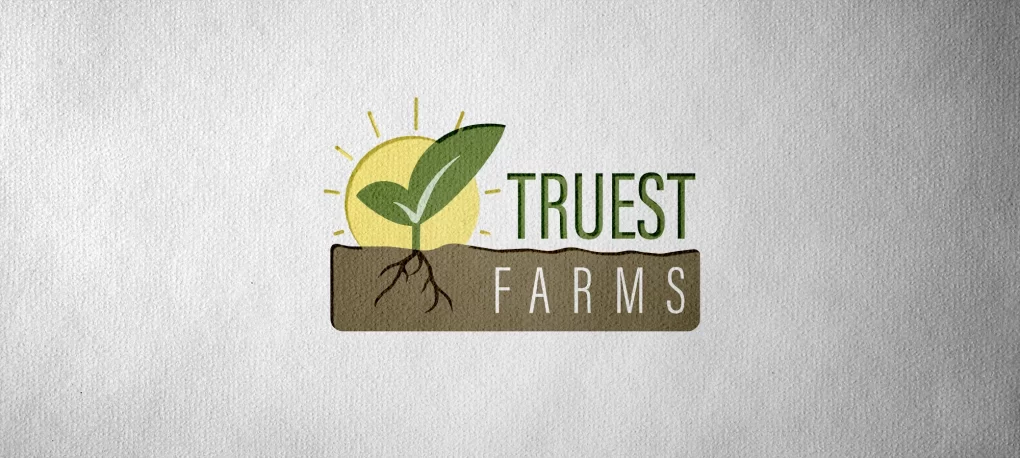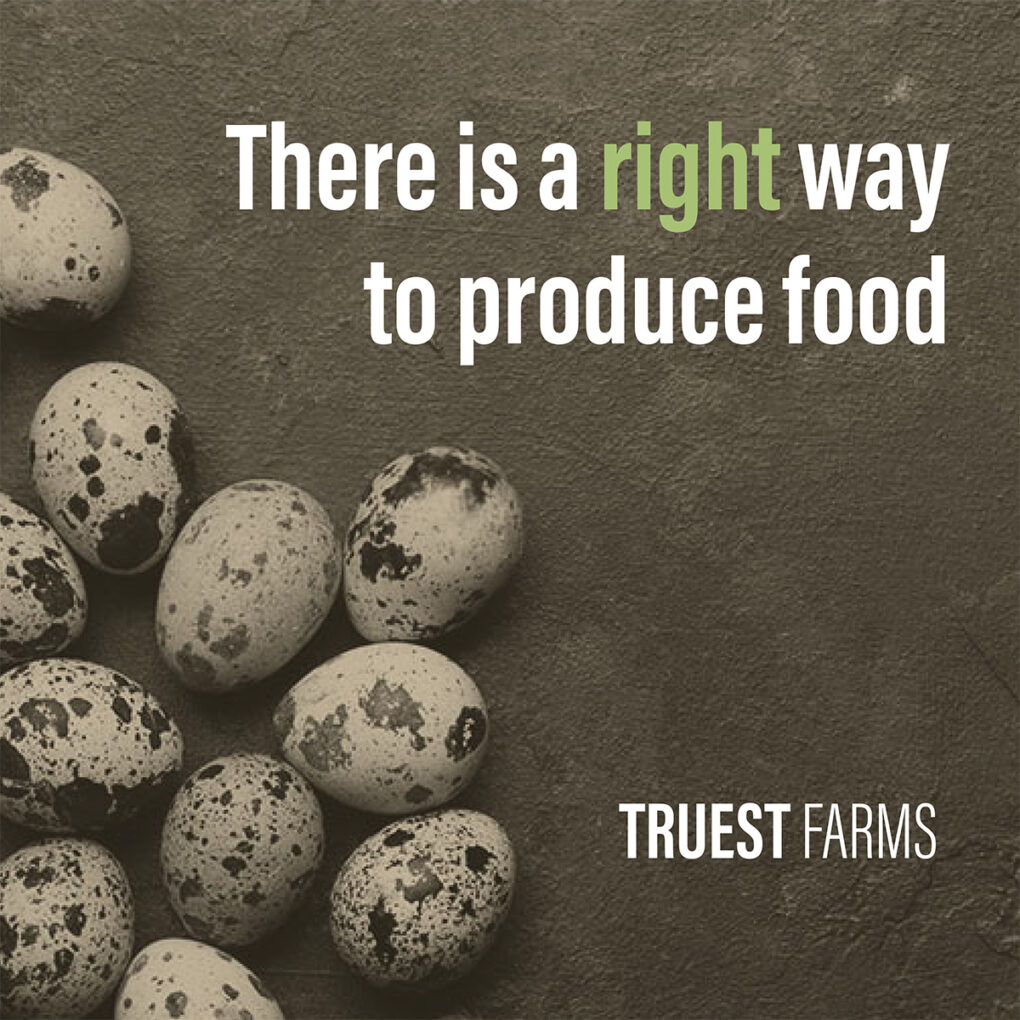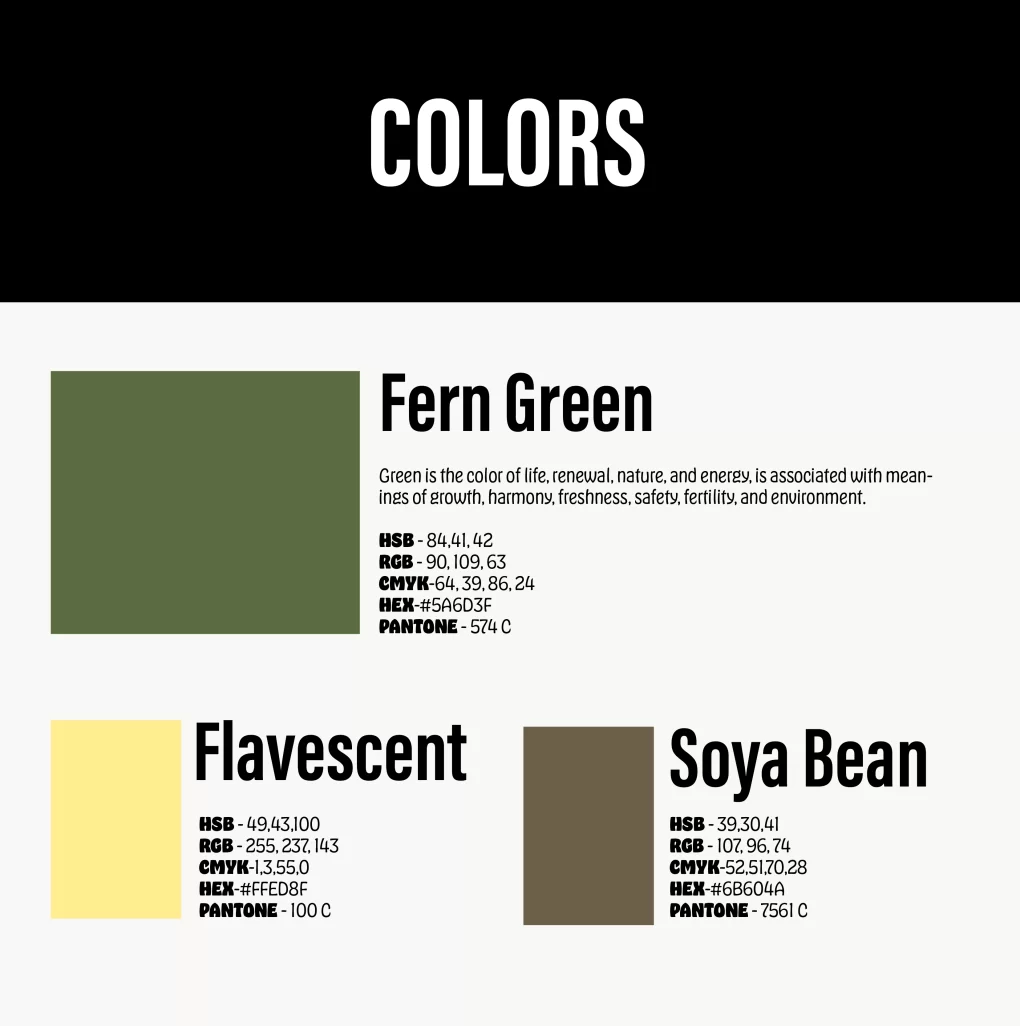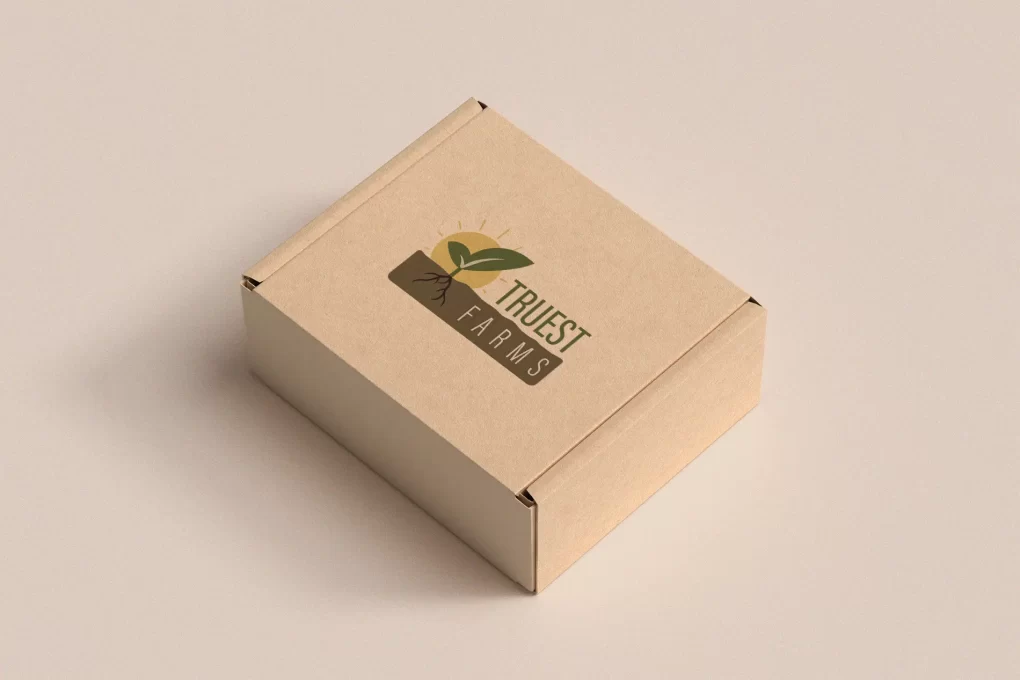
Branding for Truest Farms
Truest Farms is a first-generation family farm operating out of Mechanicsburg, Ohio. Their goal is to produce food in its truest form using nature and ethics as a guide to provide local, sustainable nutrition for all to enjoy.
When I started working with Truest Farms, I listened carefully to determine their fundamental premise, their irresistible promise, and other descriptive words that would prove useful when trying to capture their visual essence.
Fundamental Premise: There is a right way to produce food.
Irresistible promise: Taste something real.

Step 1: Survey stakeholders.
I surveyed each of the stakeholders to better understand how they wanted to be perceived. This involved interview questions and exercises that drew out key adjectives and descriptors. One of the key words I kept hearing was “right.” They believed there was a right way to do food,. The checkmark seen in the middle of the leaves with the green color is a clever way to communicate the feeling of rightness, as if to say “We have checked the box on doing food production well.”
Step 2: Build a consumer profile.
I worked with the Truest team to develop a consumer profile so that I could design a brand package that was attractive to their prospective consumers who care about:
-
regenerative agriculture
-
environmental impact
-
soil fertility and biodiversity.
Understanding details about the ideal customer would be a critical component to knowing what they like to see. The look and feel of all visual elements of the brand would need to feel attractive to the ideal customer. The brand needs to give the target consumer the sense that the products will improve their life and solve their problems.

Step 3: Research competition
The Truest farms brand would need to clearly communicate the industry in which the business operates, but it would need to do so in a way that stands out from competition. This tension between fitting in and standing out is one of the many challenges the designer faces. With Truest Farms, the nature-based color choices and overt depiction of a plant near the type logo “Truest Farms” easily places this logo in the realm of farm products. There wouldn’t be any confusion as to which industry Truest Farms sits, but the execution would need to be distinct since the symbolism is overt and common so that when seen alongside other farms in markets and online, consumers would know that Truest Farms does sell something unique.

Step 4: Build a brand identity.
Values, ethos, and style preferences are translated into visual communication with restraints on color, typeface(s), tone of voice, mood, and technical usage.
Step 5: Design a logo.
We narrowed down the preferences and goals of Truest to decide between a monogram logo, a wordmark, pictorial mark, abstract logo mark, a mascot, combination mark, or emblem. The logo would need to suits the brand identity and have enough versatility to work for long term goals. While designing a logo, I value collaboration and ingenuity.

